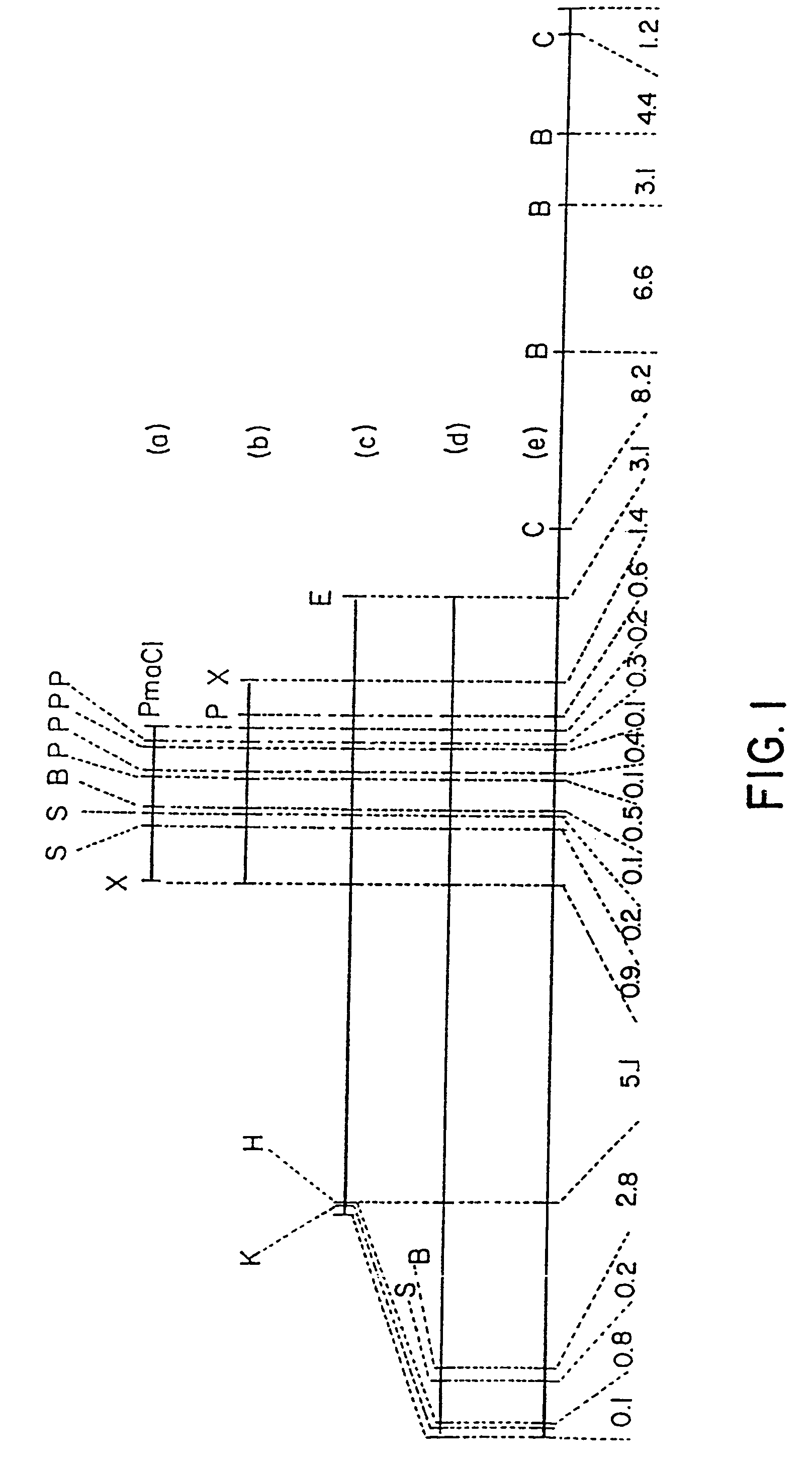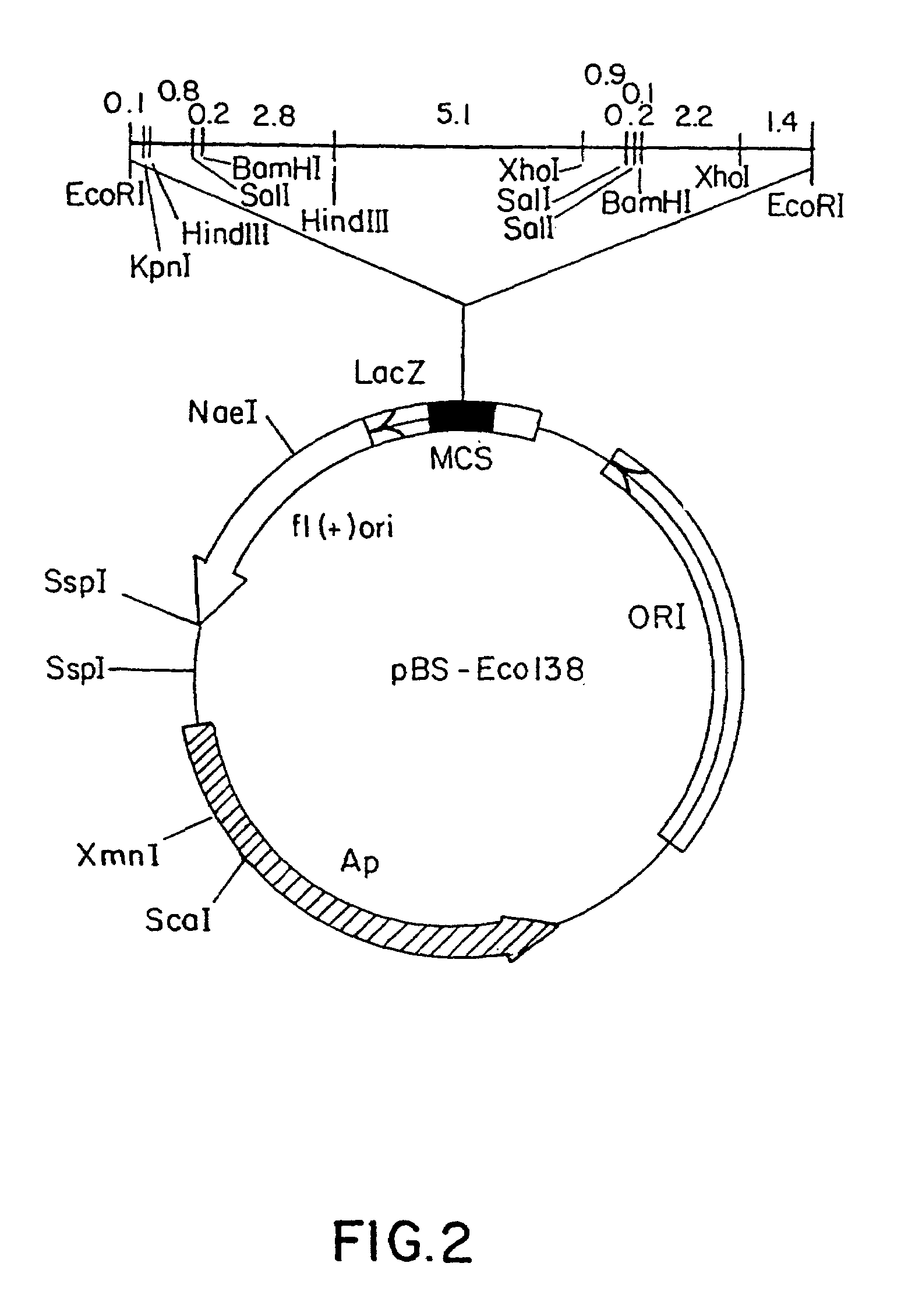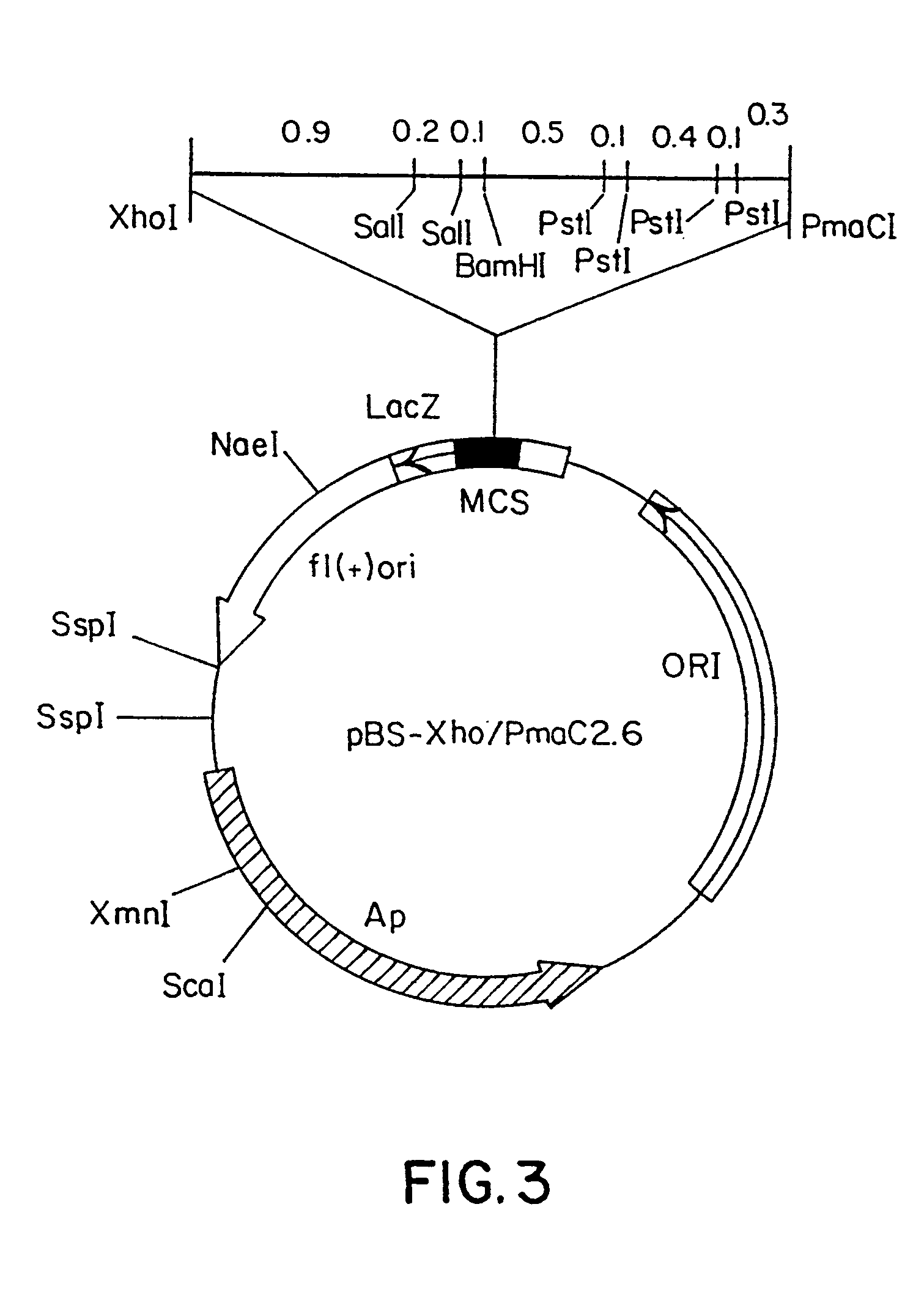Methods of conferring ppo-inhibiting herbicide resistance to plants by gene manipulation
a technology of ppo-inhibiting herbicides and gene manipulation, applied in the field of dna fragments, can solve the problems that compounds cannot be used on farmland when such crops are under, and achieve the effect of conferring ppo-inhibiting herbicide resistance and specific resistance to ppo-inhibiting herbicides
- Summary
- Abstract
- Description
- Claims
- Application Information
AI Technical Summary
Benefits of technology
Problems solved by technology
Method used
Image
Examples
example 1
Construction of an Arabidopsis thaliana cDNA Library
[0116]Wild type Arabidopsis thaliana ecotype Columbia laboratory strain (which can be obtained from the Sendai Arabidopsis Seed Stock Center (Department of Biology, Miyagi College of Education, Aoba-yama, Sendai 980, Japan) is grown from seed and green leaves are collected after 20 days of cultivation in a greenhouse. Five grams of collected green leaves are frozen in 10 ml of liquid nitrogen and then ground with a mortar and pestle into fine powder. After vaporizing the liquid nitrogen, RNA is extracted using a commercially available kit for RNA extraction (Extract-A-PLANT™ RNA ISOLATION KIT, Clontech.) to recover total RNA (about 1 mg) from the extract by the ethanol precipitation method. Then, a commercially available Oligo dT column (5′→3′) is used to separate about 50 μg of the poly-A+ RNA fraction from the total RNA thus obtained. cDNA can be synthesized from said poly-A+ RNA fraction using commercially available cDNA synthes...
example 2
Screening for cDNA Clones Encoding Protoporphyrinogen Oxidase
[0117]The amplified Arabidopsis thaliana cDNA library obtained in Example 1 or commercially available maize cDNA library is used to transform a mutant strain of E. coli lacking a PPO gene (hemg locus) such as strain SASX38 which is described by Sasarman et al. (J. Gen. Microbiol. 113: 297 (1979)) and the cells are spread onto LB agar medium plates and incubated for two days. On agar plates, the host cells show limited growth and form minute colonies because of their hemg-phenotype (lacking the PPO gene). Colonies with restored PPO function are relatively larger due to complementation with a PPO cDNA and are easily isolated. From such SASX38 transformants, phage are harvested and the clone possessing the longest cDNA insert is selected as a PPO positive cDNA clone according to the method described by Watanabe and Sugiura (Shokubutsu Biotechnology Jikken Manual. Cloning and Secuencing, Translation: Manual for Plant Biotechno...
example 3
Re-cloning of cDNA encoding Protoporphyrinogen Oxidase into a Plasmid Vector and Determination of Nucleotide Sequence
[0118]The positive cDNA clone obtained in Example 2 is re-cloned into a plasmid vector pUC118 (Takara Shuzo Co., Ltd.) according to standard methods as described by Short et al., (Nucleic Acids Research 16: 7583 (1988)). The plasmid is then cleaved by EcoRI (Takara Shuzo Co., Ltd.) and the molecular size of the PPO cDNA is determined by agarose gel electrophoresis.
[0119]A series of deletions of the insert thus re-cloned into said plasmid vector may then be prepared according to standard methods as described by Vieira and Messing (Methods in Enzymol. 153: 3 (1987)). These deletions are used for the determination of the nucleotide sequence of the cDNA insert by the dideoxy-chain-termination method as described by Sanger et al., (Proc. Natl. Acad. Sci. U.S.A. 74: 5463 (1977)) using Sequenase version 2 kit (U.S. Biochemical Corp.). Alternatively, several sequencing primer...
PUM
| Property | Measurement | Unit |
|---|---|---|
| pH | aaaaa | aaaaa |
| pH | aaaaa | aaaaa |
| total volume | aaaaa | aaaaa |
Abstract
Description
Claims
Application Information
 Login to View More
Login to View More - R&D
- Intellectual Property
- Life Sciences
- Materials
- Tech Scout
- Unparalleled Data Quality
- Higher Quality Content
- 60% Fewer Hallucinations
Browse by: Latest US Patents, China's latest patents, Technical Efficacy Thesaurus, Application Domain, Technology Topic, Popular Technical Reports.
© 2025 PatSnap. All rights reserved.Legal|Privacy policy|Modern Slavery Act Transparency Statement|Sitemap|About US| Contact US: help@patsnap.com



